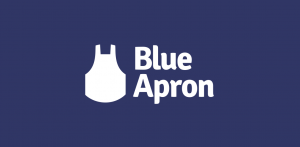 In the wake of Amazon shaking up food retailing with a bid to acquire Whole Foods, Blue Apron, a meal-delivery service that is based in New York, is planning on a public offering. Blue Apron is looking to raise approximately $586.5 million and will be joining an increasing number of start-ups focused on consumers that are considering making a debut on the stock market.
In the wake of Amazon shaking up food retailing with a bid to acquire Whole Foods, Blue Apron, a meal-delivery service that is based in New York, is planning on a public offering. Blue Apron is looking to raise approximately $586.5 million and will be joining an increasing number of start-ups focused on consumers that are considering making a debut on the stock market.
Prospective investors of Blue Apron are, however, aware that the initial public offering is coming at a time when the e-commerce giant Amazon is making a move that might change how food shopping is done altogether. There has been endless speculation by analysts on what the intentions of Jeff Bezos, the founder of Amazon, are if the bid for Whole Foods is successful.
Shopper behavior
Following the news that Amazon had put forward a bid for the food retailer caused the stocks of rival grocery chains to plunge. Kroger shares, for instance, fell by 9% though they made a slight recovery on Monday. The shares of Whole Foods, on the other hand, continued to appreciate and on Monday stood at $43.22. This was higher than the $42 cash offer that Amazon had made, an indication that investors were hopeful that a rival bidder might emerge.
Acquisitions and investments
To enhance their capacity and capabilities in e-commerce, other retailers have either invested in or acquired startups. Just recently Walmart acquired men’s apparel firm Bonobos for $310 million. Target, on the other hand, invested $170 million in Casper, a firm that makes sleep products including mattresses.
Some of the rivals that pose a threat to Blue Apron in the meal-kit segment includes Purple Carrot, Sun Basket and HelloFresh. Such startups came into being based on the argument that consumers are in need of fresh ingredients as well as the convenience that comes with doorstep delivery. In its pitch to investors, Blue Apron is likely to make the case that its food-delivery service niche is very different from what Amazon’s general service offering via PrimeFresh.
One of Blue Apron’s biggest expense is marketing as this currently consumes about $144.1 million. Since 2014 that portion of the budget has jumped tenfold. On the plus side the aggressive marketing has resulted in huge popularity especially among millennials.
